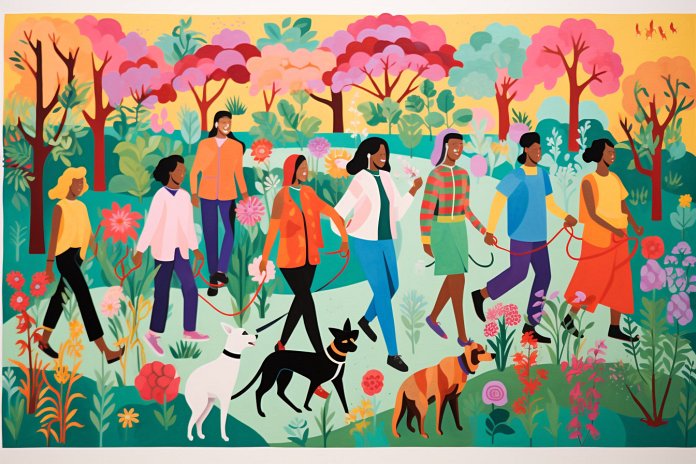
You may have heard that dogs can see more than just black and white. This means that dogs can actually differentiate between different skin tones. But can dogs really tell the difference between two different skin colors, like olive complexion or fair skin? Some believe that dogs can even be racist based on skin color.
Signs Dogs Can Tell Skin Color
We now know more about how dogs see the world than we did a decade ago. Dogs can see more colors than we previously thought, which leads us to wonder if they can also differentiate between skin colors. Many dog owners have reported that their dogs act aggressively around people of a particular race or skin color. However, this aggression is often fear-based, stemming from trauma or lack of exposure to certain skin colors.
Body Language
When dogs are frightened, they may exhibit certain body language signals such as growling, barking, raised hair on their back, tail tucking, ears back, and exposed teeth. Other signs of discomfort include hiding, aggressive behavior, and running away.
History of Dogs Seeing Skin Color
Dogs do not categorize people into races like humans do, so it is impossible for them to be racist. However, dogs do see people with different skin tones differently. This is largely due to exposure, as dogs who have seen people of various skin tones will likely respond the same to everyone. However, dogs who have only been exposed to one skin color may struggle to understand variations in color and facial cues. Additionally, if their owners feel nervous or anxious around people of different cultures, dogs can pick up on that and react accordingly.
Science Behind Dogs Seeing Skin Color
Dogs have limited eyesight compared to humans, so they may struggle to distinguish between shades of different colors. This can affect how much detail they see, including facial details of people with darker skin. However, this is not about race, but rather about how dogs perceive colors.
Training Your Dog Not to Fear People of Different Skin Colors
To help your dog overcome their fear of people with different skin colors, it is important to expose them to a variety of people and animals from a young age. Socialization is key, but if you have an older dog, you can still work on building their confidence gradually. Start with small steps, such as introducing a new person to your dog in your home or going on a walk in a new place. Remember to proceed with caution to prevent any negative experiences for your pet and others. Working with a pet trainer can also be helpful in training your dog in a positive way.
“It isn’t about race at all, as it’s simply about the way your dog sees colors.”

Tips & Things to Know
1️⃣ Dogs can display fear-based aggression towards people of different skin tones if they have had a traumatic experience or lack socialization. Understanding that fear-based aggression is not the same as racism can help owners address their dog’s behavior.
2️⃣ Recognize the signs of fear and discomfort in your dog’s body language, such as growling, barking, tail tucking, and exposed teeth. Being aware of these signals can help you identify when your dog is feeling fearful or uncomfortable around people of different skin colors.
3️⃣ Socialization is key to helping your dog overcome their fear of people of different skin colors. Expose your dog to a variety of people and animals from a young age to help them become less fearful of unfamiliar situations. If you have an older dog, start with small steps and gradually increase exposure to new people and environments with caution. Working with a pet trainer can provide guidance and support in the process.
Frequently Asked Questions, Answered ✅
1. Can dogs tell the difference between two different skin colors?
– Yes, dogs are more capable of telling the difference between different skin tones than previously believed.
2. Can dogs be racist based on skin color?
– No, dogs cannot be racist. However, they may display fear-based aggression towards certain skin colors if they have had traumatic experiences or lack exposure to people of that skin color.
3. What are the signs that a dog may be uncomfortable or fearful?
– Signs of fear in dogs include growling, barking, tail tucking, ears back, exposed teeth, hiding, aggressive behavior, and running away.
4. How does exposure to different skin tones affect a dog’s perception?
– Dogs who have been exposed to people of various skin tones will likely respond the same to everyone. However, dogs raised in environments with only one skin color may not understand the variation of color and may have difficulty reading facial cues.
5. How can I help my dog overcome fear of people with different skin colors?
– The best way to help your dog is through proper socialization, exposing them to people of all skin colors from a young age. If your dog is older, start slowly and gradually expose them to unfamiliar people in unfamiliar places, building their confidence over time. Working with a pet trainer can also be beneficial.